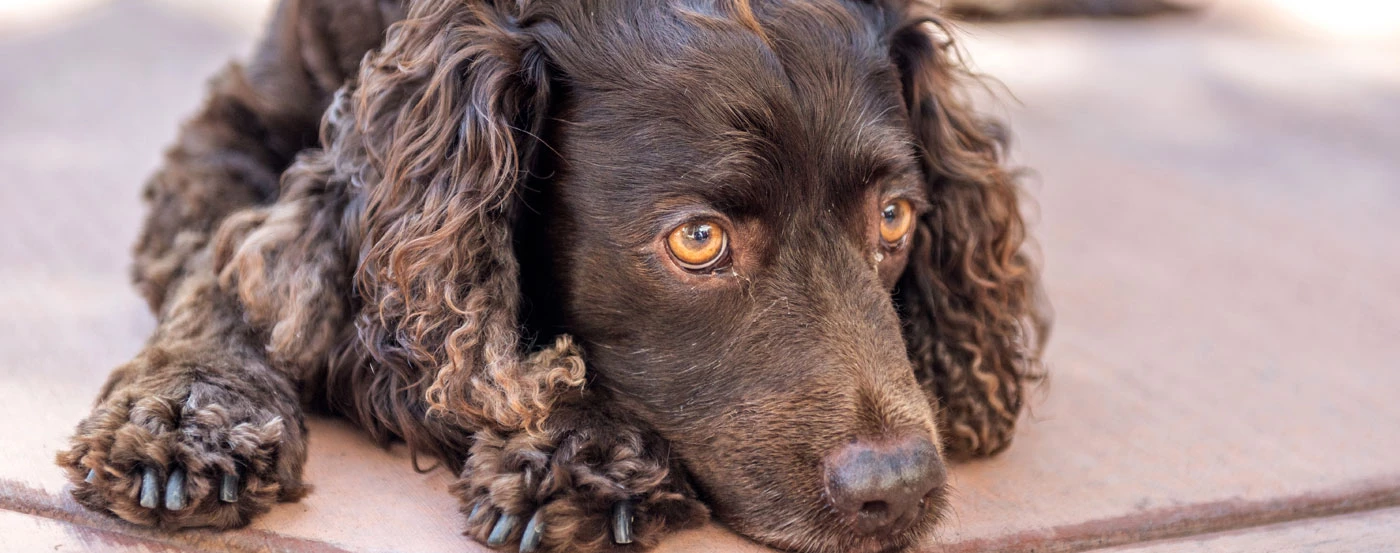Greyhounds are intelligent, clean dogs, but toilet training is still an important step to take with your new puppy.
When to start toilet training your Greyhound puppy
You should be able to get your Greyhound puppy from 8 weeks of age, and you can start toilet training them to some extent as soon as they arrive. However, expert advice sometimes states that a puppy's control over their bowel and bladder is better for training from 12 to 16 weeks.
How to toilet train your Greyhound puppy
Toilet training your Greyhound puppy or adopted dog needs persistence and patience. Follow these steps to toilet train a Greyhound.
Decide on a designated area for your dog to go to the toilet. This can be in your garden or on the street. A tree or lampost you can easily access will help the dog learn to associate it with going to the toilet.
Puppies usually need to urinate or defecate between 15 and 30 minutes after eating. Taking your dog out first thing in the morning and last thing at night, as well as at regular intervals throughout the day, is also recommended.
Learn the signs that your dog needs to go. This can include circling, sniffing, and vocalisation as they learn to go outside.
Use positive reinforcement when your dog goes to the toilet in the designated spot. Using treats to do this and telling them they are good will help. Never react angrily to accidents as the dog is still learning, which is detrimental to their development.
Try to use keywords like you would with commands they can begin to recognise and associate with going to the toilet.
Try to use keywords like you would with commands they can begin to recognise and associate with going to the toilet.
As well as toilet training, crate training is another important part of your dog's development.
Why is it important to crate train your Greyhound puppy?
Crate training can help with toilet training and provide a safe space for your dog to relax, sleep, or be transported.
When to start crate training your Greyhound puppy
You can start crate training your puppy as soon as you get them. This will help them get used to it and won't seem like a strange and different thing if introduced at a later age.
How to crate train your Greyhound puppy
Crate training your dog from an early age should be a case of patiently allowing them to get used to it. Follow these steps, and your dog should treat the crate as its den by the end of your training.
Try to set the crate up for your dog coming home, so it is always there. Let them investigate it and get used to it to start with.
As your dog gets used to the crate, move some of its blankets inside, so it goes in and is met by familiar smells. Food can also be an excellent way to get the dog to explore the crate, and hiding treats in the blanket will give them a positive experience.
As your puppy first gets used to the crate, stay nearby and don't shut the door.
After your dog has been in a few times, try shutting the door but stay with your dog and reassure them. Feed them treats through the side of the crate so they know being in there is no punishment.
Gradually extend the time the dog is in the crate and leave for short times at first until your dog is completely comfortable.
Pros and cons of crate training
Being able to leave your dog in the crate if you are going out is helpful as it will give you peace of mind and give them a relaxing, safe place to stay. Having your dog sleep in the crate will also stop them from sleeping in your bed and waking you up.
If they are not adequately trained, some dogs can think of their crate as a punishment, and they would rather stay out with the humans. Taking your time and never ordering your dog to the crate angrily is advised.
You don't have to be a qualified dog trainer or take your Greyhound to a dog training class for them to be obedient. The following tips should help with your training;
Greyhounds are more intelligent than many other dogs. This means they need to be mentally stimulated to engage, so stick with short training sessions.
Positive reinforcement is key
Always use positive reinforcement by telling your dog how well they are doing, patting them, and giving them occasional treats.
On the other hand, giving your dog too many treats will take away from the lessons they learn and can upset their stomach.
Consider clicker training
Clicker training is a great way to replace the positivity of giving your dog treats and conditioning them to realise the clicking means they are doing well with their dog training.





















